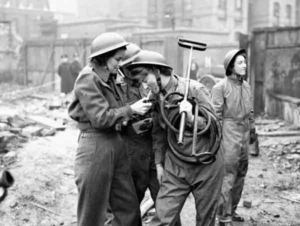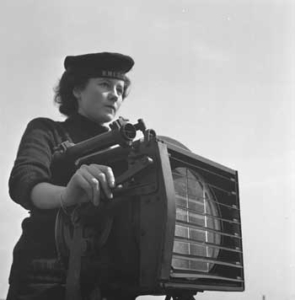Canadian women have served their country’s military from the time of the 1885 North-west Rebellion right up to the present day. In the process, they have changed the course of the nation’s history, and their own.

Personnel of the Canadian Women’s Army Corps taking part in a firefighting exercise, London, England, 28 February 1943. – Image courtesy of TVO.
Motivated by patriotism, loyalty, a sense of duty and in many cases, a sense of adventure, they first worked as nurses at home and abroad. The commitment of these individuals contributed to a new social perception of women’s capabilities and potential.
Canadian nurses volunteered their services during a period of great change and innovation in the field of military medical services. It was also a time of tremendous danger. Canadian military nurses, or nursing sisters, as they were sometimes called, often worked right near the front in wartime. They were also present on hospital ships, where they daily faced the threat of torpedo attacks.
Many of them lost their lives on the job.
Records show that the first women officially in the Royal Canadian Navy were six RCN nurses in WWI who served during August 1914 on His Majesty’s Canadian Hospital Ship HMCHS Prince George, the only Canadian hospital ship to ever sail with the Royal Canadian Navy (RCN).
During World War II, Canadian women began to play a more direct part, taking on many noncombatant support roles, and thus allowing more men to take on combat roles. Women who took on these tasks often faced discrimination because of their decision, because they were female, and/or because of their origins, as noted by author Grace Poulin in WWII Servicewomen.
The participation of Canadian women in the Armed Forces has been profoundly influenced by two distinct groups, the Canadian Women’s Army Corps (CWAC) – the ‘CWACs’, and the Women’s Royal Canadian Naval Service (WRCNS) – the ‘Wrens’.
Both groups are featured at CFB Esquimalt Naval and Military Museum, along with stories of individual women like Doris Hope, Jenny Pike and Jerri Mumford, who gave their best in difficult, demanding circumstances.

